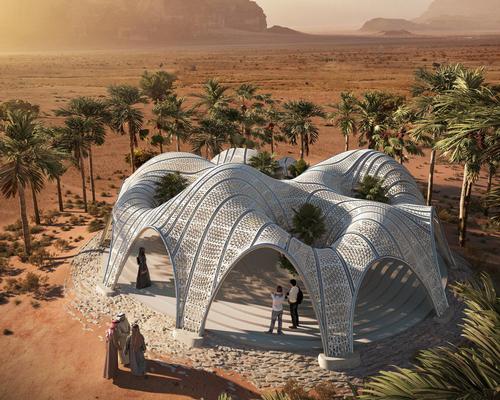12 Mar 2020
MEAN*'s algorithmically-designed, 3D-printed desert pavilion is an oasis for rest and gathering
BY Stu Robarts

The Middle East Architecture Network (MEAN*) have designed a pavilion for rest and gatherings in the Wadi Rum desert valley in the south of Jordan that responds to the ancient landscape using current design and building technologies.
The pavilion was conceived to provide shade and a space to rest during the day, to be a place for celebration, storytelling and gatherings at night and to offer a model for building structures on Mars, with the landscape of the area being a close match for the planet.
MEAN* said: "Inspired by the ingenuity of the mobile architecture of the local Bedouins, we were inclined to simulate a tent-form using the ‘Mesh Relaxation’ parametric strategy, which generates a digital Catenary mesh geometry, in equilibrium."
The team based the layout of the mesh structure on the magnetic force patterns that form between a number of points, using a script to both generate the shape and divide it into sections that could be produced by the industrial robot they were to use.
They continued: "Taking reference from the lightweight geodesic dome system of Mars Camp, which is located on a plot near the site, the design team envisioned a novel system of 3D-printed panels that can be deployed onto a CNC bent, steel pipe system."
The result is a hybrid of a 3D-printed polymer shell on 3D-printed concrete topography, with the panels that make up the outer shell tessellated for 3D printing efficiency.
The panels and undulating shape of the pavilion allow light into the space and air for ventilation, with areas to sit inside and desert trees and shrubs planted to help regulate the interior atmosphere.
Close Window